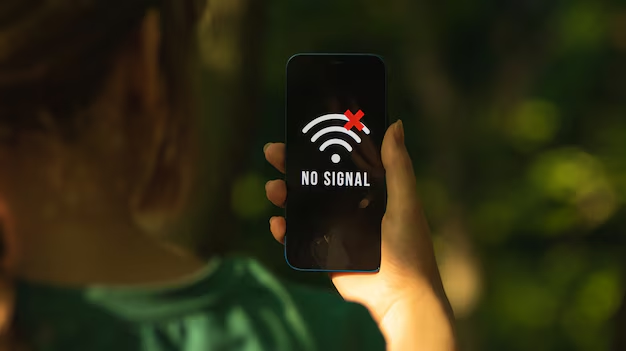In any survival setting, whether it’s a wilderness emergency, a natural disaster, or a long-term societal disruption, physical resources like food, water, and shelter are undeniably critical. However, often overlooked but equally vital is group morale. The human spirit, when broken, can lead to apathy, infighting, poor decision-making, and ultimately, a breakdown of the group’s ability to survive. History is replete with examples of groups succumbing not just to external threats, but to internal despair and conflict. For instance, many accounts from shipwreck survivors or POWs highlight that those who maintained a sense of purpose and social cohesion had a higher chance of enduring.
Maintaining group morale isn’t a passive act; it’s a dynamic, proactive process that requires dedicated effort from all members, especially from designated or emergent leaders. It involves understanding human psychology under stress and implementing strategies that foster hope, cooperation, and a sense of shared purpose. This article outlines key steps and strategies to effectively maintain group morale in survival settings, ensuring the collective resilience needed to overcome adversity.
The Psychological Underpinnings of Group Morale in Crisis
Under extreme stress, human behavior can become unpredictable. Basic needs, fear, anxiety, and the loss of normalcy can erode psychological well-being. Individuals may experience:
- Denial: Difficulty accepting the severity of the situation.
- Apathy: A loss of interest or motivation, leading to inaction.
- Hyperactivity/Erratic Behavior: Rushed, disorganized, or dangerous actions.
- Guilt: Blaming oneself or others for the situation or for surviving.
- Psychological Breakdown: Complete incapacitation due to stress.
Morale acts as a buffer against these psychological pitfalls. It’s the collective mental and emotional state of a group, characterized by enthusiasm, confidence, and discipline. High morale fosters resilience, the ability to bounce back from setbacks, and tenacity, the persistence to keep striving despite immense challenges. Crucially, hope is a vital ingredient; it’s the belief that things can and will get better, providing the internal motivation to persevere.
Step 1: Establish Clear and Empathetic Leadership
Effective leadership is the cornerstone of high group morale in survival situations. A leader sets the tone, provides direction, and acts as a beacon of stability.
- Take Charge Decisively: In a crisis, ambiguity breeds anxiety. A leader must make decisions, even if difficult, and communicate them clearly. This doesn’t mean being autocratic, but rather demonstrating confidence and initiative.
- Lead by Example: A leader’s demeanor is contagious. Maintain composure, demonstrate a positive attitude, and actively participate in tasks. If the leader shows despair, the group will follow.
- Prioritize Well-being (Physical & Psychological): Show genuine concern for the physical and mental state of each group member. Recognize that emotional distress is a natural reaction to trauma. This involves:
- Ensuring basic needs (food, water, rest) are met.
- Practicing Psychological First Aid (PFA): This is a humane, supportive response to people in distress. It involves providing practical care, assessing needs and concerns, helping people connect with social support, and offering information on coping. PFA focuses on practical assistance and creating a sense of calm and safety, rather than forcing people to talk about traumatic events.
- Be Accessible and Listen Actively: Be present, visible, and available for group members to voice concerns. Listen without judgment, acknowledge their feelings, and validate their experiences. Sometimes, simply being heard can significantly alleviate stress.
Step 2: Implement Transparent and Consistent Communication
Uncertainty fuels fear and suspicion. Open and honest communication is vital for dispelling rumors and building trust.
- Share Information Regularly: Even if there’s little new information, regular updates prevent speculation. Be honest about challenges but also emphasize efforts being made.
- Be Clear, Concise, and Specific: Avoid jargon or vague statements. Clearly state the “who, what, when, where, why, and how” of tasks and the situation.
- Manage Expectations: Don’t offer false hope. Be realistic about the severity and potential duration of the situation, but always couple it with a plan of action and a focus on resilience. The paradox of survival psychology is acknowledging harsh reality while maintaining hope.
- Encourage Two-Way Communication: Create opportunities for group members to ask questions, offer suggestions, and express their thoughts. This fosters a sense of involvement and agency.
- Address Rumors Promptly: Unchecked rumors can quickly erode morale. Address them directly and provide factual information.
Step 3: Establish Clear Roles, Responsibilities, and Routine
Structure and purpose combat the chaos and hopelessness inherent in survival.
- Define Roles and Tasks: Assign specific, meaningful tasks to each group member, leveraging their skills and abilities where possible. Everyone should have a purpose and feel useful. This fosters a sense of contribution and shared responsibility.
- Create a Daily Routine: A predictable routine provides a sense of normalcy and stability, reducing anxiety and promoting mental well-being.
- Scheduled Activities: Establish fixed times for waking, meals, work shifts, rest periods, and even communal activities.
- Task Rotation: If appropriate, rotate tasks to prevent burnout and ensure everyone learns various skills.
- Breaks and Rest: Emphasize the importance of rest and breaks to prevent physical and mental exhaustion.
- Set Achievable Goals: Break down large, overwhelming objectives into smaller, manageable tasks. Achieving these small wins provides a sense of accomplishment and builds momentum. For instance, instead of “find rescue,” the goal might be “secure water for 24 hours.”
Step 4: Foster Social Cohesion and Emotional Support
Humans are social creatures. Isolation and unresolved conflict can be as deadly as physical threats.
- Promote Teamwork and Collaboration: Emphasize the group’s interdependence. Frame challenges as “our problem” to solve together, rather than individual burdens.
- Encourage Mutual Support: Create an environment where members feel comfortable helping each other and expressing vulnerabilities. Simple acts of kindness and empathy go a long way.
- Facilitate Conflict Resolution: Conflicts are inevitable under stress. Address disagreements quickly and constructively.
- Active Listening: Encourage parties to truly listen to each other’s perspectives.
- Focus on Solutions: Shift focus from blame to finding common ground and practical solutions.
- Mediation: A neutral leader or group member can mediate disputes if necessary. The goal is to maintain the relationship and group functionality, not to “win.”
- Organize Group Activities (if feasible): Even small, non-essential activities can boost spirits:
- Storytelling/Sharing: Encourage sharing personal stories, jokes, or memories (positive ones).
- Singing/Music: If instruments or voices are available, music can be a powerful emotional release.
- Simple Games: Card games or improvised games can provide mental distraction and foster camaraderie.
Step 5: Nurture Hope and Celebrate Progress
Hope is a critical survival tool. It’s not blind optimism but a realistic belief in the possibility of a positive outcome, even amidst hardship.
- Focus on “Why”: Remind the group of their collective purpose, whether it’s family, community, or a shared objective of survival. This higher purpose can provide powerful motivation.
- Identify and Celebrate Small Victories: Acknowledge every achievement, no matter how minor. Finding a new water source, successfully building a shelter, or even just surviving another day are significant accomplishments.
- Verbal Recognition: Publicly praise effort and success.
- Moment of Reflection: Take time to acknowledge progress, reinforcing the idea that their efforts are making a difference.
- Maintain a Future-Oriented Mindset: While addressing immediate needs, encourage members to think about a future beyond the crisis. This could involve planning for rescue, rebuilding, or simply imagining a return to normalcy.
- Encourage Problem-Solving: Frame challenges as solvable problems rather than insurmountable obstacles. This fosters a sense of agency and collective ingenuity.
Historical Context and Lessons Learned
Throughout history, countless accounts of survival demonstrate the profound impact of morale.
- Ernest Shackleton’s Imperial Trans-Antarctic Expedition (1914-1917): Shackleton’s leadership is a prime example of maintaining morale in extreme conditions. Stranded in the Antarctic ice for almost two years, he meticulously managed his crew’s mental state. He enforced strict routines, organized games and communal meals, and fostered a spirit of optimism and unity, ensuring all 28 men survived against incredible odds.
- The Donner Party (1846-1847): In stark contrast, this group of American pioneers, trapped in the Sierra Nevada mountains, rapidly disintegrated due to dwindling resources, lack of strong leadership, and internal conflict. Their story highlights how quickly group morale can collapse under duress, leading to desperate measures and tragic outcomes.
These historical narratives underscore that survival is not just about physical endurance; it’s a profound test of psychological fortitude and the ability of a group to function as a cohesive, supportive unit.
Conclusion
Maintaining group morale in survival settings is a continuous, multi-faceted endeavor. It requires vigilant leadership, open communication, shared purpose, established routines, and a consistent focus on hope and resilience. By proactively addressing the psychological needs of the group alongside their physical requirements, survival groups can significantly enhance their chances of enduring even the most daunting challenges. Remember, the strongest groups are those that are not only prepared physically but are also united in spirit.
Frequently Asked Questions (FAQ)
Q1: Why is group morale so important in a survival situation?
Group morale is crucial in a survival setting because it directly impacts a group’s ability to think clearly, cooperate effectively, and persevere through adversity. Low morale can lead to apathy, despair, conflict, poor decision-making, and a breakdown of the group’s functional capacity, ultimately reducing the chances of survival. It fuels resilience and tenacity.
Q2: What is the role of a leader in maintaining morale?
A leader’s role is paramount. They must lead by example, maintaining composure and a positive attitude. They need to provide clear and decisive direction, ensure transparent communication, assign roles, establish routines, and actively foster social cohesion and hope. An effective leader acts as a psychological anchor for the group.
Q3: How can we deal with conflict within a survival group?
Conflict resolution is vital. Leaders or designated members should address disagreements promptly and constructively. Encourage active listening, focus on finding solutions rather than assigning blame, and remind members of their shared goal of survival. Simple rules of respectful interaction and regular check-ins can also help prevent conflicts from escalating.
Q4: Should we hide negative information to keep morale high?
No, it’s generally counterproductive to hide information. Transparent communication builds trust. While you shouldn’t offer false hope, it’s essential to be honest about challenges while simultaneously presenting clear plans and focusing on what can be done. Managing expectations realistically while emphasizing hope and the group’s capacity for resilience is the best approach.
Q5: What are “small victories” and why are they important?
Small victories are minor achievements or successes within the survival context, such as finding a new food source, successfully building a part of a shelter, or simply completing a difficult day. They are important because they provide a sense of accomplishment, build momentum, counter despair, and reinforce the belief that the group’s efforts are making a difference, fueling hope and motivation.






